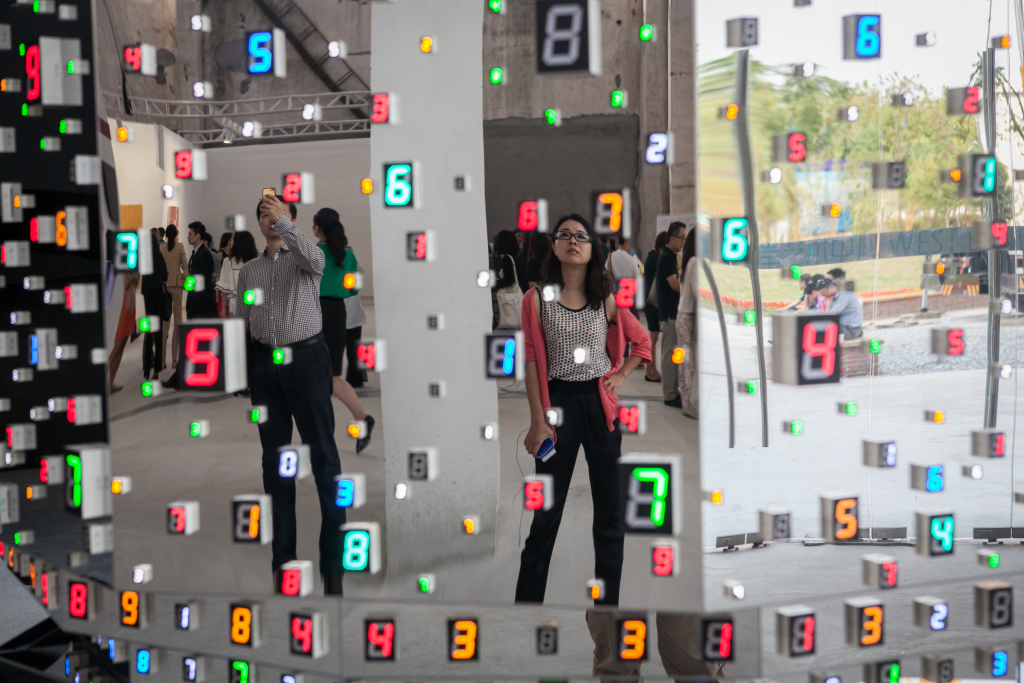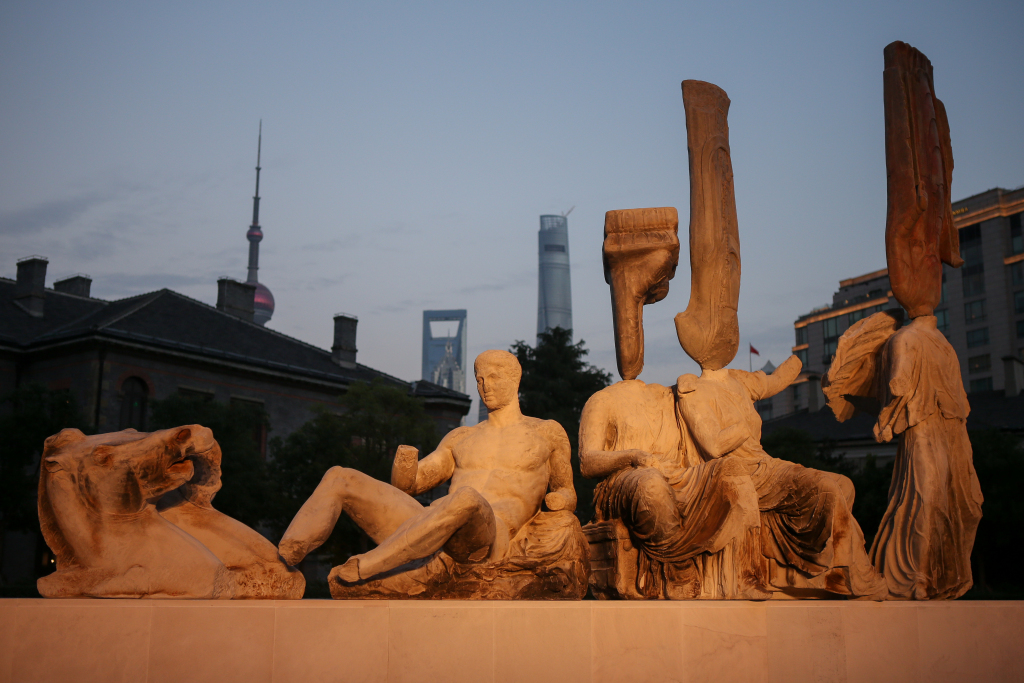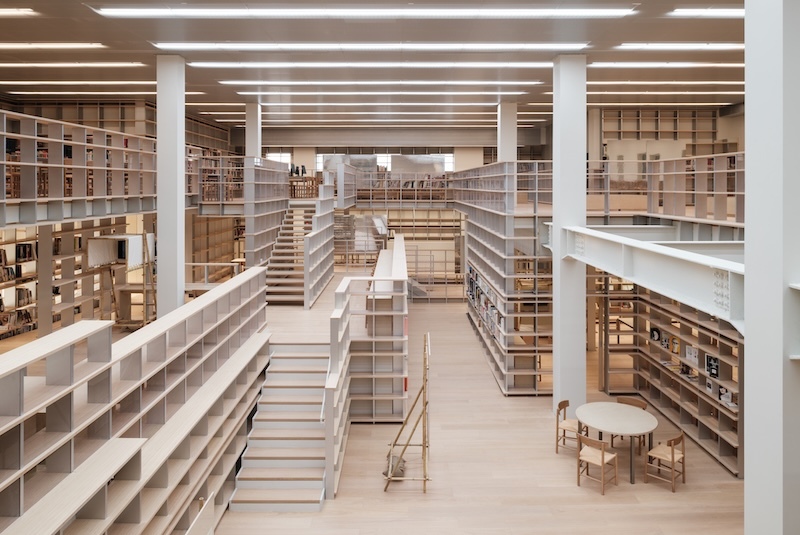On the evening of November 16, the setting sun reflected on the Huangpu River, turning the west bank of Shanghai into a crimson hue.
On a piano on the bustling riverside platform of the West Bund Art Museum, musicians took turns playing Satie's timeless masterpiece, which lasted for 19 hours— perfectly echoing the theme of the Shanghai International Art Fair: "Global Art Scene, Art Shanghai, Art Enjoy Life."
Over the past week, more than 300 art institutions, over 120 art events, and over 10,000 artworks from around the world have collectively created an energetic "art platform" that connects the entire city of Shanghai. From the Shanghai Biennale and the Ancient Rome Exhibition at the World Expo Museum to the ART021 Art Fair which closed on November 16 and the West Bund Art & Design Fair which concluded on November 18, museums, collectors, art professionals, visitors, and passersby have all participated in a high-intensity "relay" of art in Shanghai.

On the riverside platform of the West Bund Art Museum, the "841st Challenge," inspired by Fluxus pioneer John Cage, is relayed here.

The Dome Art Center exhibition area at the 12th West Bund Art & Design Fair.
Over the past weekend, a plethora of large and medium-sized exhibitions and art events took place, from the Ancient Rome exhibition at the World Expo Museum and the Shanghai Biennale at the Shanghai Museum of Contemporary Art, to the newly built West Bund International Convention and Exhibition Center, West Bund Dream Center, and Dome Art Center, as well as the Tank Shanghai, West Bund Art Center Hall A, West Bund Art Museum, West Bund Whirlpool, and Long Museum (West Bund), offering a dazzling array of choices. In addition to its expanded space, the West Bund Art & Design Fair also launched the concept of "West Bund Art & Design Week," extending the traditional four-day art fair format to seven days. The ART021 Art Fair at the Shanghai Exhibition Center on Nanjing West Road also attracted a large and enthusiastic crowd, with the venue packed with people.

Outside the Shanghai Exhibition Center, the ART021 event made the pedestrian walkway on Yan'an Road much more crowded than usual.
In fact, the art boom in November began on November 7 with the opening of the 15th Shanghai Biennale, "Can the Flowers Hear the Bees?", which attracted a large number of artists from home and abroad. In the following week, nearly 50 art events were held throughout the city, including on the Bund, Suzhou Creek, West Bund, and Pudong. As a highlight of the art season, the opening of the West Bund Art & Design Fair and ART021 further heralded the arrival of "Shanghai Time" for art transactions.

On the opening day of the Shanghai Biennale, Japanese artist Ami Yamazaki gave a live performance, followed by works by Liang Huigui.
Nurturing: The Co-growth of Galleries and Cities
As early as the beginning of November, Huqiu Road, a backstreet of the Bund, was bustling with activity. On one side, Labubu fans lined up for a limited-time exhibition, while on the other side, trucks were constantly moving artworks in and out of the entrance of No. 27 Huqiu Road. This building houses the Shanghai showrooms of many international galleries, and with the arrival of the art season, it has entered its busiest time of the year.

In early November, workers were moving artworks outside the gallery building on Huqiu Road.
Lisson Gallery established its Shanghai space on the second floor of this building in 2019. The gallery, founded in London in 1967, first connected with Shanghai at the inaugural West Bund Art & Design Fair in 2014, where it presented a solo project by Japanese artist Tatsuo Miyajima, which was later invited to the public area of the Fosun Art Center rooftop. Since 2017, Lisson has officially returned to the West Bund Art & Design Fair with a booth, and has participated in the Shanghai art fair annually ever since. Simultaneously, its collaborating artists have held solo exhibitions at the Fosun Art Center and the Shanghai 21st Century Minsheng Art Museum, and their public art works have also appeared on the streets of Shanghai. Among these, the Shanghai Museum of Contemporary Art's 2019 exhibition, "The Soul of Challenge – Yves Klein, Lee Ufan, Ding Yi," highlighted the academic rigor of Lisson's represented artist (Lee Ufan).

Tatsuo Miyajima's solo project at the inaugural West Bund Art & Design Fair
That same year, Lisson Gallery chose to establish its presence on the Bund in Shanghai. "We didn't suddenly enter Shanghai; we've maintained long-term and active partnerships with the museums, institutions, and art fairs here, growing alongside the city's art ecosystem," said Dong Daozi, China Director of Lisson Gallery, in an interview with The Paper. "At that time, Shanghai was a 'blue ocean': the art market was growing rapidly, the museum system was gradually improving, and more and more artists and institutions were gathering here. It was this diverse and mature ecosystem that allowed the gallery to have a more complete and multi-dimensional clientele."

Leveraging its local advantages in Shanghai, ART 021 has set up its first Shanghai 21 Contemporary Art Fair in the Zhongshi Building at Rockbund Source.
In Shanghai, ShanghART Gallery undoubtedly has a deeper connection with the development of contemporary art. Nearly 30 years ago, Swiss artist Lorenz Helbing opened Shanghai's first contemporary art gallery in the second-floor corridor of the Portman Hotel. At that time, few people in China understood what the contemporary art market was all about.
Thirty years later, ShanghART has spaces in Shanghai's Moganshan Road, West Bund, and Suzhou Creek area, as well as in Beijing and Singapore, and is a regular participant in international art fairs. Important names in the contemporary art world, such as Yu Youhan, Liang Shaoji, Ding Yi, Li Shan, Zhang Enli, and Yang Fudong, are also intertwined with ShanghART's history.

ShanghART Gallery booth at ART021 in 2025.
This year, ShanghART participated in both the West Bund Art & Design Fair and ART021, showcasing works by artists of different ages at its booth. Gallery founder Lawrence told The Paper that this reflects not only a focus on individual artists but also the overall trajectory of the times.
“Over the past thirty years, Shanghai and Chinese art have undergone a tremendous transformation from openness to modernization and internationalization,” Lawrence recalled. “Many of the pioneering artists we collaborated with in the past keenly perceived these changes in China and made their choices ahead of time. Now, that phase has ended, and we need to delve deeper: what decisions did artists make over the past thirty years, and how have their theories and practices fared?” Regarding artists from different eras, Lawrence believes that today's young artists differ from their predecessors. Many have gained extensive experience studying and exchanging ideas overseas, and their work is no longer merely an expression of personal dreams, but a practice situated within the context of globalization and modernization. Galleries no longer choose to collaborate with artists solely based on reputation or past achievements, but rather on observation, judgment, and an assessment of their creative potential.

West Bund Art Center, Hall A, ShanghART Gallery presents Hu Xiangcheng's solo project.
Lawrence recalls that the Shanghai art market was relatively scarce thirty years ago, "There were almost no galleries back then." Today, the city not only has a rich commercial environment but has also cultivated a knowledgeable and interesting audience. "Many viewers have been exposed to art since childhood, and their understanding of art is more diverse and more interesting."
As a gallery, the most important thing is to constantly adjust our perspective: "We need to change our eyes and give new artists more time and space to be understood. Instead of immediately making judgments, we should provide a platform that makes people think and interested."
When art fairs become an integral part of "art in life," they also become a platform for art lovers to witness the "present tense" of international art, and an opportunity for ordinary people to engage with art in their daily lives. ShanghART and Lisson are just two examples of galleries representing this trend.

West Bund Art & Design Fair
Sales, market, and Shanghai's attractiveness remain to be tested.
Art fairs are always a business activity. With the increasing number of art fairs around the world, competition is inevitable. For galleries that come to art fairs, sales are the most important goal of the trip.

West Bund Art & Design Fair
At the international galleries section on the first floor of the West Bund International Exhibition Centre, the White Cube booth saw Antony Gormley's 2024 cast iron sculpture *RISE II* sell for £500,000, while his 2014 work *SMALL HEST II* fetched £250,000. Tracey Emin's neon work *An Insane Desire For You* sold for £175,000, and other works including *The Next Journey*, *Because I Love You*, and *Away From The Cross* also sold. Other notable sales included Kazuo Shirahira's 1970s oil painting *Kokuyo* and Zhou Li's mixed-media work *Mandala No. 12*. In the following days, works by artists such as Park Seo-Bo, Isamu Noguchi, and Gerhard Richter were also acquired during the exhibition.

White Cube Gallery booth at West Bund Art & Art Fair
Within hours of its West Bund Art & Design fair neighbor, Hauser & Wirth, opening its VIP day on the afternoon of the 13th, works by Louise Bourgeois, Lee Bul, Nicolas Party, Avery Singer, Uman, and Ambera Wellmann were sold, with many more on pre-order. Zhang Enli's 2014 oil painting "Water (3)" sold for £550,000.
Lihsin Tsai, senior director of Hauser & Wirth, said the gallery has felt unprecedented enthusiasm and attention in Shanghai and has seen a continued demand for high-quality artworks in the Asian market.
Wendy Xu, Executive Director of White Cube Asia, also felt the vibrancy and diversity of Shanghai's art scene, the continuous improvement of collectors' professional skills, and the increasing demand for works with lasting artistic value and contemporary relevance.

West Bund Art & Design Fair
This year, the West Bund Art & Design Fair's gallery section has moved to a brand-new venue, bringing a smoother and more comfortable experience. For example, galleries that were previously located in Hall B of the West Bund Art Center are now exhibiting on the fourth floor of the West Bund International Convention Center. The works in this section are more diverse in form and more affordable, attracting more collectors who are new to the art market. The gallery exhibition area on the fourth floor will continue until the 18th.

Eliasson's works at the 12th West Bund Art & Design Fair.
Expanding our focus to ART021, David Zwirner Gallery reported a strong showing in Shanghai this week, selling works by artists including Huma Barba, Felix González-Torres, Mama Anderson, Katherine Bernhardt, Scott Kahn, Dana Schutz, and Walter Price. Mellon Gallery, which primarily represents European artists, also sold 60-70% of its works at this year's ART021.
Hive Center for Contemporary Art, a Chinese gallery, participated in ART021 for the thirteenth time with 34 artists. "In the past few days, we have deeply felt the high level of attention and enthusiasm from collectors at the event, and their willingness to exchange ideas and negotiate on the works was particularly strong. As of the interview on the 16th, Hive Center had sold more than two-thirds of the works, and the remaining works are also under active communication. The exhibition has been well received," said Xia Jifeng, founder of Hive Center.

Liang Huigui's works at the Santa Gallery booth at ART021
Haegue Yang, one of the most prominent artists at this year's Shanghai Biennale, had her work "Accepting Narrative Dispersion - On the Quantity of Non-Cathartic Dispersion" presented on the second-floor platform. Her work was featured at the ART021 Santa Gallery booth. Although it was just a small piece, perhaps because it was the same as the one in the Shanghai Biennale, it became a poster piece for ART021 and attracted more attention.
Galleries are choosing to bring artists from the Shanghai Art Fair and combine them with Shanghai exhibitions, which is one of the current strategies for galleries.

Artist Felix González-Torres' conceptual art piece, "Untitled (The Lovers)," depicts blue curtains hanging in an empty exhibition hall.
Shortly before the opening of the Shanghai International Art Fair, the 2025 Art Basel and UBS Global Art Collection Survey Report was released. The report shows that despite global uncertainties, high-net-worth collectors continue to prioritize art as a core investment. In 2025, they will allocate an average of 20% of their wealth to art collections, up from 15% last year, with Generation Z collectors reaching an even higher 26%.
Digital art is becoming mainstream, second only to painting and sculpture, and is particularly active in France, Japan, and among Gen Z collectors. Social media and other channels are becoming important ways for collectors to learn about artists and their works, and the younger generation of collectors is redefining the way they collect.

The 12th West Bund Art & Design Fair
While galleries are currently reporting optimistic sales figures in Shanghai, the reality is that the number of art fairs worldwide is constantly increasing. In Asia alone, besides Hong Kong and Shanghai, Singapore and Seoul have become prominent venues for emerging art fairs in recent years. However, this doesn't necessarily mean an expansion of the art market, nor does the number of tradable artists or the overall market size grow indefinitely. The challenge lies in attracting galleries to bring their best works to Shanghai, facilitating transactions there, and ensuring the sustainability of this system. This requires attractiveness—an attraction that concerns the city's art ecosystem, the market, and the convenience and efficiency of transactions—and necessitates collaborative efforts from multiple parties.
The value of art is not simply judged as "good" or "bad," but rather as allowing viewers to gain different levels of experience through watching and thinking. Shanghai provides such an art platform.


